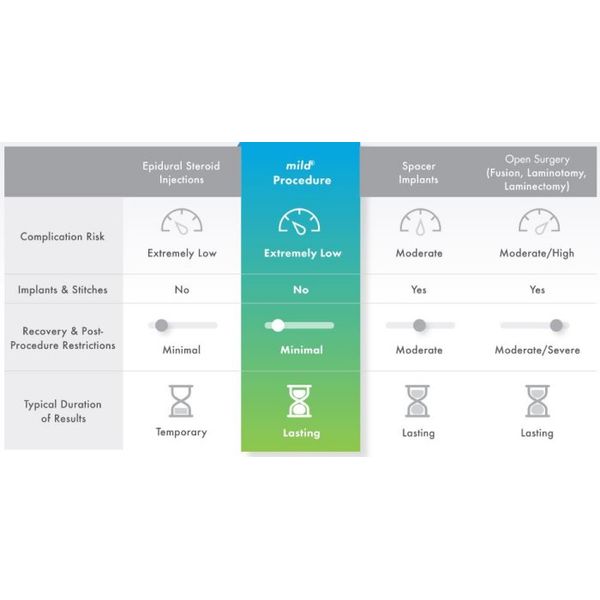

Lumbar Spinal Stenosis (LSS)
A condition in which the lower spinal canal narrows and compresses the spinal nerves in the lower back. Best visualized as a “kink in a drinking straw,” this compression can contribute to pain and mobility issues.
HOW COMMON IS LSS?
- Over two million LSS patients nationwide are diagnosed and treated annually3
- Generally found in people over the age of 50
- The likelihood of developing LSS increases with age
WHAT ARE THE CAUSES OF LSS?
The natural wear and tear on the spine as people age can lead to a number of contributing factors that cause the narrowing of the spinal canal and create pressure on the spinal nerves:
- Thickening of ligament tissue
- Overgrowth of bone (osteoarthritis)
- Bulging of discs
HOW IS LSS DIAGNOSED?
In addition to taking a medical history that includes a list of your symptoms, other tests may be performed to verify LSS:
- Physical examinations to test mobility
- Imaging: X-rays, MRI, CT scan
PAIN WHEN STANDING
- Pain or numbness in the lower back when standing upright
PAIN WHEN WALKING
- Pain, numbness, heaviness or tingling in upper legs or buttocks when walking
PAIN WHEN SLEEPING
- Pain when lying down that may be relieved by curling into the fetal position
RELIEF WHEN SITTING OR BENDING FORWARD
- Temporary relief when bending forward while sitting or standing as pressure on the spinal cord is released and space in the spinal canal is “opened”
- Common actions include finding a chair, leaning over shopping cart, using walker or cane
The following chart compares several options that are typically recommended for LSS patients. Every therapy has risks and benefits. Only you and your doctor can decide which option is best for you.

Your Next Step May Be mild®
mild® is an early treatment option to consider when conservative therapies (e.g., physical therapy, pain medication, chiropractic) are not providing adequate relief. The mild® Procedure addresses a major root cause of LSS by removing excess ligament tissue to restore space in the spinal canal. The mild® Procedure typically takes less than an hour and can be performed through a single, tiny incision smaller than the size of a baby aspirin (5.1 mm).
Speak To A mild® Doctor
Whether you were recently diagnosed with LSS, have had surgery or are getting epidural steroid injections that are no longer providing pain relief, talk to a mild® Doctor to see if you are a candidate for the mild® Procedure.
